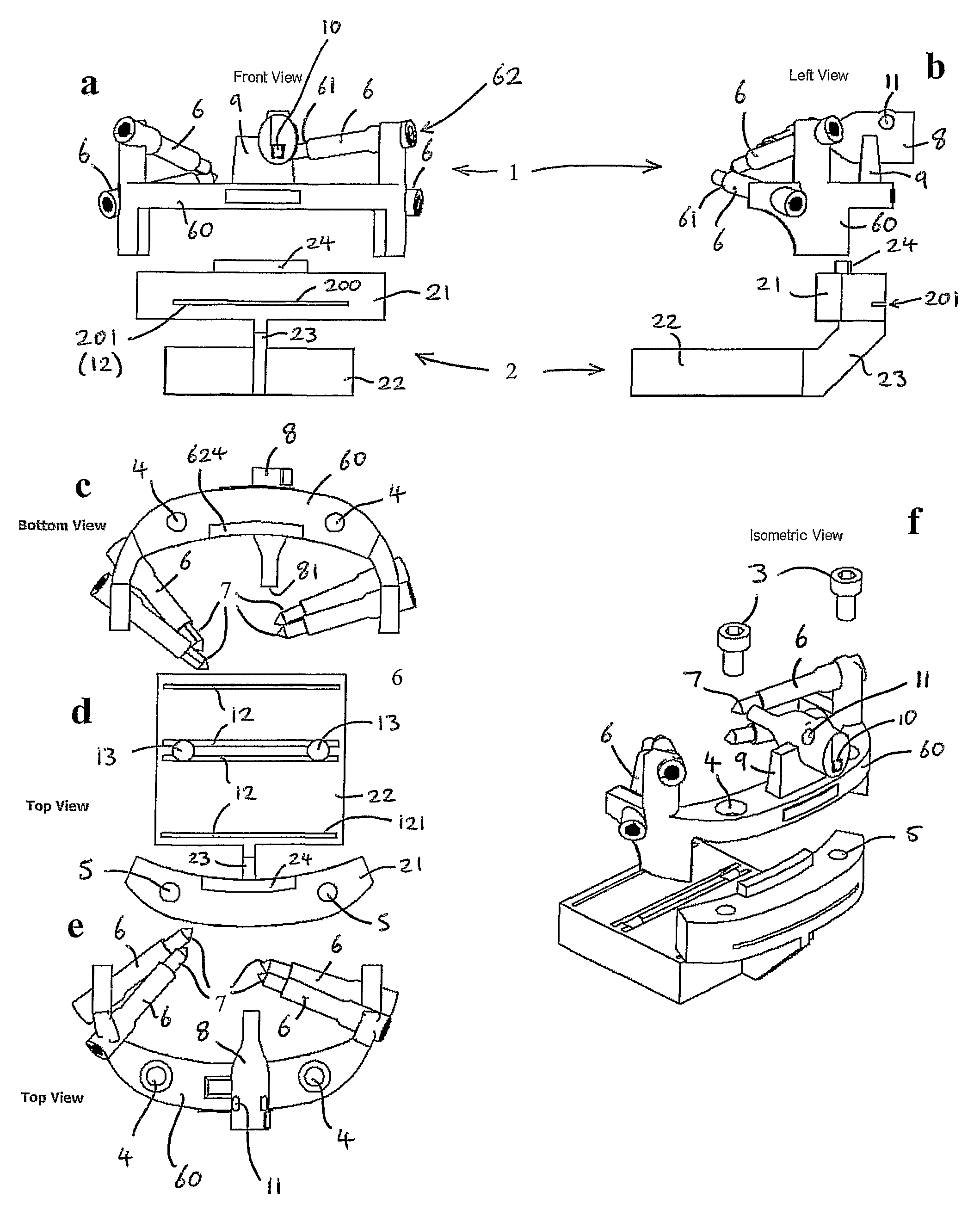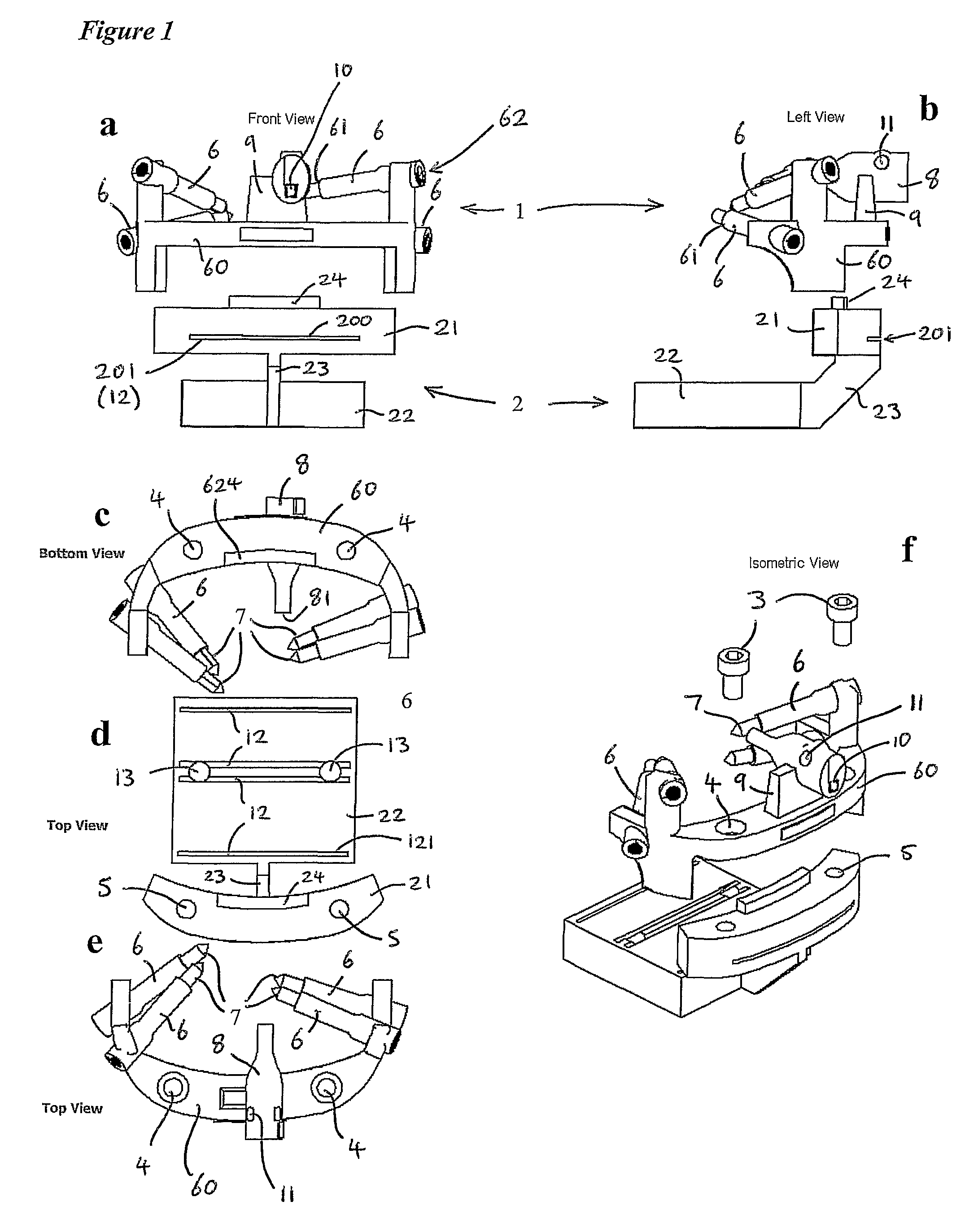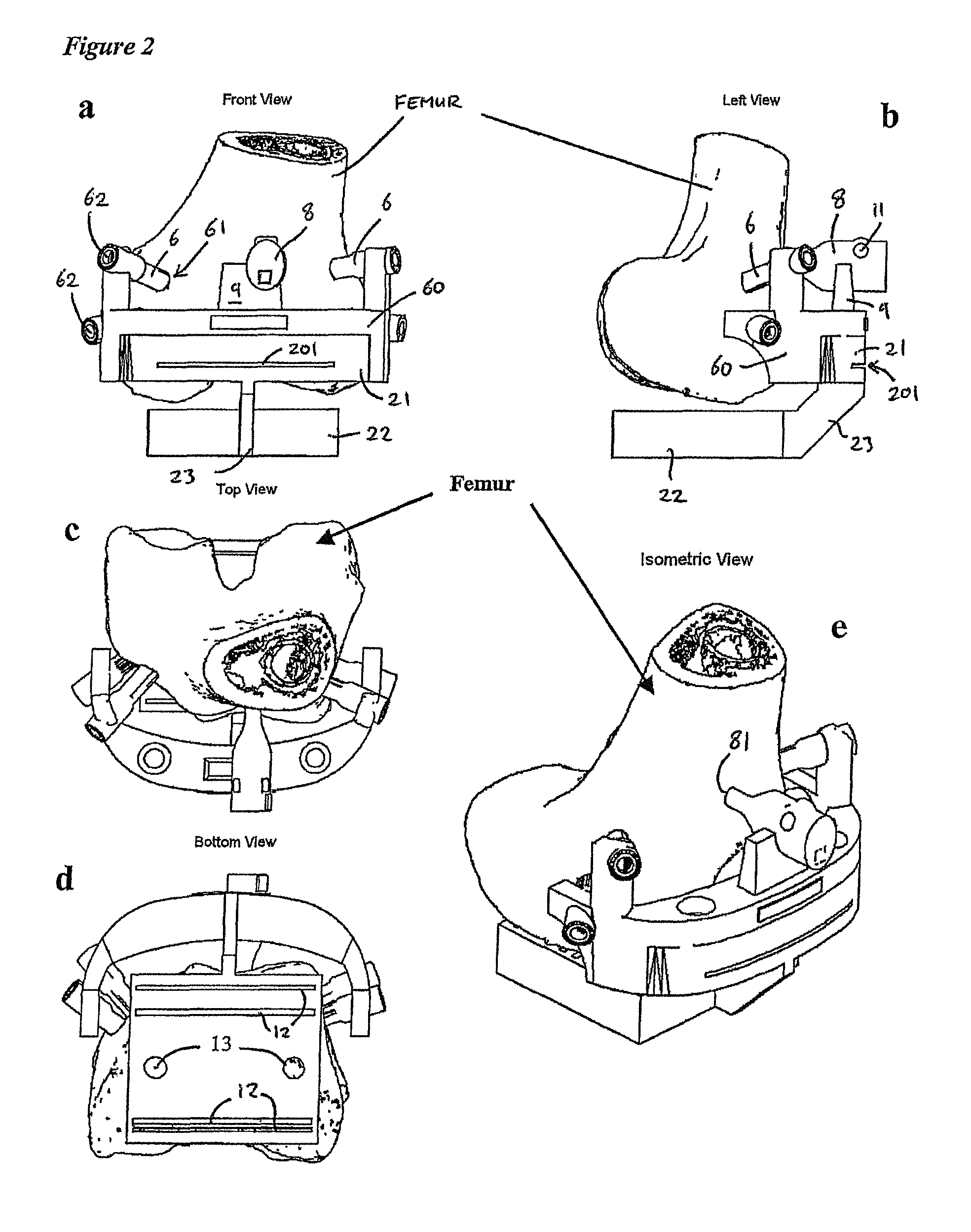Surgical templates
a surgical and template technology, applied in the field of surgical template systems, can solve the problems of increasing the complexity and time of the implantation procedure, increasing the number of intra-operative decisions, and inaccuracy in placement, so as to achieve cost-effectiveness, less complex, and shorter time
- Summary
- Abstract
- Description
- Claims
- Application Information
AI Technical Summary
Benefits of technology
Problems solved by technology
Method used
Image
Examples
Embodiment Construction
[0139]Certain embodiments of the invention may be used in the field of total knee replacement (TKR) surgery. In one example of TKR surgery, two different assemblies each embodying the invention are used, one for use with the femur the other with the tibia, to aid the surgeon in cutting both of these bones to receive prosthetic knee components.
[0140]Each assembly comprises a patient specific orienting block (locating means) and a cutting block (tool guide block), the latter having the appropriate number of slits and holes for guiding moving surgical tools to make the cuts in the relevant bone accurately and in the correct orientation so as to receive the relevant prosthetic component in the position that has been determined through the preoperative planning procedure. Prior to being used in surgery, the orienting and cutting blocks for each bone are assembled and firmly attached with screws to form rigid unitary guides that locate each in a unique position onto the relevant bone and ...
PUM
| Property | Measurement | Unit |
|---|---|---|
| thick | aaaaa | aaaaa |
| lengths | aaaaa | aaaaa |
| lengths | aaaaa | aaaaa |
Abstract
Description
Claims
Application Information
 Login to View More
Login to View More - R&D
- Intellectual Property
- Life Sciences
- Materials
- Tech Scout
- Unparalleled Data Quality
- Higher Quality Content
- 60% Fewer Hallucinations
Browse by: Latest US Patents, China's latest patents, Technical Efficacy Thesaurus, Application Domain, Technology Topic, Popular Technical Reports.
© 2025 PatSnap. All rights reserved.Legal|Privacy policy|Modern Slavery Act Transparency Statement|Sitemap|About US| Contact US: help@patsnap.com



